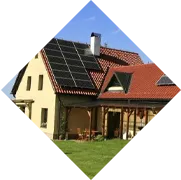price of solar panels over time
The Price of Solar Panels Over Time A Historical Perspective
The utilization of solar energy has garnered significant attention over the past few decades, primarily due to its potential to provide sustainable and clean power. One of the critical factors driving the adoption of solar technology is the price of solar panels. Understanding the trends in solar panel pricing over time reveals not only advancements in technology but also broader economic and policy shifts.
In the early days of solar technology, specifically during the 1970s and 1980s, the cost of solar panels was prohibitively high. The average price per watt was around $76 in 1977. During this period, solar energy was primarily adopted by environmentally conscious individuals and niche markets. The high costs limited widespread implementation, and government incentives were minimal. It was a time when solar panels were considered a luxury rather than a viable energy alternative.
The Price of Solar Panels Over Time A Historical Perspective
The early 2000s marked a pivotal moment in the evolution of solar energy. Governments around the world started to recognize the need for alternative energy sources, prompting various investment initiatives and incentives for solar technology adoption. In many regions, feed-in tariffs and tax credits emerged, further propelling growth. As a result, the price of solar panels continued its downward trend, reaching about $2 per watt by 2008.
price of solar panels over time

Nevertheless, it was the aftermath of the 2008 financial crisis that truly accelerated the plummeting costs of solar panels. There was a substantial oversupply in the market, leading to fierce competition among manufacturers, particularly in Asia. Countries such as China emerged as dominant players, producing solar panels at lower costs through advanced manufacturing techniques. By 2010, the price of solar panels had fallen to around $1.50 per watt, and this decline has persisted.
The last decade has witnessed remarkable progress in solar panel technology and pricing. By 2020, average prices fell below $0.50 per watt in many regions. Innovations such as bifacial panels, which can capture sunlight on both sides, and improvements in photovoltaic efficiency have contributed to lowering costs while enhancing performance. Furthermore, the growing focus on sustainability and climate change has intensified investments in solar energy, leading to further advancements and cost reductions.
As of 2023, the price of solar panels continues to be on a downward trajectory, with estimates hovering around $0.30 to $0.40 per watt in optimal market conditions. This decline has had profound implications for energy markets across the globe. Solar energy is now one of the most cost-effective sources of electricity, rivaling and even outpacing fossil fuels in many regions. This transformative shift opens avenues for both residential and commercial applications, making solar an attractive option for reducing energy bills and carbon footprints.
In conclusion, the historical perspective of solar panel pricing showcases a remarkable evolution driven by technological advancements, market dynamics, and supportive policies. As the world continues to grapple with the challenges posed by climate change, the decline in solar panel prices heralds a future where renewable energy can play a dominant role in our energy landscape. With continued efforts to innovate and expand solar technology, the dream of a sustainable and clean energy future is becoming increasingly attainable.
-
String Solar Inverter: The High-Efficiency Solution for Smart Solar EnergyNewsJul.14,2025
-
Revolutionizing Rooftop Energy with the Power of the Micro Solar InverterNewsJul.14,2025
-
Power Independence with Smart Off Grid Solar Inverter SolutionsNewsJul.14,2025
-
On Grid Solar Inverter: Powering the Future with Smart Grid IntegrationNewsJul.14,2025
-
Monocrystalline Solar Panels: High-Efficiency Power for the Future of Clean EnergyNewsJul.14,2025
-
Bifacial Solar Panel: A Smarter Investment for Next-Generation Energy SystemsNewsJul.14,2025







